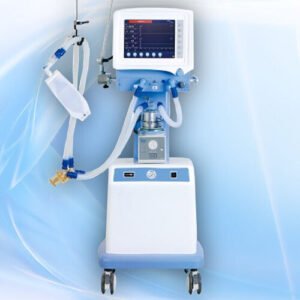An MRI LS spine, or Magnetic Resonance Imaging of the lumbosacral spine, is one of the most advanced and accurate diagnostic techniques used to examine the lower part of the back. This imaging test produces detailed pictures of the bones, discs, nerves, and surrounding soft tissues in the lumbar and sacral regions. It is widely recommended for patients experiencing chronic back pain, leg weakness, numbness, or symptoms related to nerve compression. Unlike X-rays or CT scans, which rely on radiation, MRI uses powerful magnetic fields and radio waves to generate clear images without exposing the body to harmful radiation.
The lumbosacral spine supports much of the body’s weight and is responsible for flexibility and movement in the lower back. Because this region bears continuous stress and strain, it is prone to conditions such as herniated discs, spinal stenosis, degenerative disc disease, infections, or injuries. An MRI LS spine helps doctors identify the exact cause of pain or discomfort by providing high-resolution cross-sectional images that differentiate between bone, muscle, and nerve tissues. This precision allows for an accurate diagnosis and guides appropriate treatment plans, whether surgical or non-surgical.
During the MRI LS spine scan, the patient is asked to lie still on a narrow, padded table that slides into the MRI machine, which resembles a tunnel open at both ends. The test usually takes between 30 and 60 minutes, depending on the complexity of the case and whether contrast dye is used. The machine makes rhythmic tapping or thumping noises during the scan, but earplugs or headphones are provided to minimize discomfort. If a contrast agent is required, it is injected into a vein in the arm to highlight specific tissues or detect inflammation, tumors, or infections. The process is completely painless, though some patients may feel mild warmth when the dye is administered.
MRI of the lumbosacral spine is especially useful in detecting problems that other imaging tests may miss. It provides excellent visualization of spinal discs, nerve roots, and the spinal cord, allowing doctors to assess compression, swelling, or degeneration. It is commonly used to evaluate slipped or bulging discs, pinched nerves, arthritis, or spinal tumors. Moreover, because MRI does not involve ionizing radiation, it is safe for repeated use and suitable for long-term monitoring of spinal disorders or postoperative healing.
After the scan, patients can immediately return to normal activities, as there is no recovery time required. The radiologist analyzes the images and prepares a detailed report for the referring doctor, who then discusses the findings and possible treatment options. MRI LS spine not only helps diagnose existing problems but also prevents complications by detecting issues early.
Overall, MRI LS spine is a safe, non-invasive, and highly effective imaging technique that plays a crucial role in modern spinal care. It combines accuracy with safety, providing doctors and patients with valuable insights into spinal health. For those experiencing persistent lower back or leg pain, undergoing an MRI LS spine through trusted diagnostic providers like Easybookmylab ensures clarity, confidence, and timely medical intervention.
For MRI LS Spine in Gurgaon visit, Easybookmylab.







